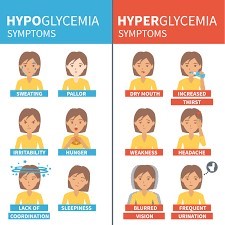A nurse is planning postoperative care for a client who is scheduled for a thoracotomy with chest tube placement.
Which of the following pieces of equipment should the nurse plan to have at the client's bedside?
Wire cutters.
Tracheostomy tray.
Montgomery straps.
Padded clamp.
The Correct Answer is D
Choice A rationale:
Wire cutters are not necessary equipment for postoperative care after a thoracotomy with chest tube placement. Wire cutters are used for cutting wires and may be found in orthopedic or surgical trays, but they are not specifically required for thoracotomy care.
Choice B rationale:
A tracheostomy tray is not necessary for postoperative care following a thoracotomy with chest tube placement. Tracheostomy trays contain supplies for managing a tracheostomy, which is a procedure involving the creation of an opening in the neck to help with breathing. This procedure is not related to thoracotomy care.
Choice C rationale:
Montgomery straps are not necessary equipment for postoperative care after a thoracotomy with chest tube placement. Montgomery straps are used to secure dressings or bandages without adhesive tape. They are not typically used in thoracotomy care.
Choice D rationale:
A padded clamp is essential equipment for postoperative care after a thoracotomy with chest tube placement. The clamp is used to temporarily close or occlude the chest tube during transportation or when changing the drainage system. This prevents air from entering the pleural space, maintaining proper suction and preventing complications such as pneumothorax.
Nursing Test Bank
Naxlex Comprehensive Predictor Exams
Related Questions
Correct Answer is D
Explanation
- A. Incorrect. The lithotomy position is not appropriate for this procedure, as it can cause discomfort and embarrassment to the client. The nurse should place the client in a left lateral Sims' position with the right knee flexed for better access to the rectum and to reduce pressure on the abdominal organs.
- B. Incorrect. The nurse should avoid eliciting a vagal response, as it can cause bradycardia, hypotension, and syncope in some clients. The nurse should monitor the client's vital signs and stop the procedure if signs of vagal stimulation occur.
- C. Incorrect. Oral bisacodyl is a stimulant laxative that can cause abdominal cramping, diarrhea, and electrolyte imbalance. It is not indicated for fecal impaction, as it can worsen the condition by increasing the bulk and hardness of the stool. The nurse should administer an enema or a stool softener before attempting digital evacuation.
- D. Correct. The nurse should insert a lubricated gloved finger and advance along the rectal wall, breaking up the stool and removing it in small pieces. The nurse should use gentle pressure and avoid injuring the rectal mucosa. The nurse should also explain the procedure to the client and obtain informed consent before performing it.
Correct Answer is A
Explanation
Irritability.

The rationale for each choice is as follows:
- A. Irritability: Correct. Irritability is one of the signs of hypoglycemia, which occurs when blood glucose levels fall below 70 mg/dL (3.9 mmol/L). Other signs include shakiness, sweating, hunger, headache, confusion, and blurred vision.
- B. Increased urination: Incorrect. Increased urination is one of the signs of hyperglycemia, which occurs when blood glucose levels rise above 180 mg/dL (10 mmol/L). Other signs include thirst, dry mouth, fatigue, nausea, and fruity breath odor.
- C. Vomiting: Incorrect. Vomiting is not a specific sign of hypoglycemia or hyperglycemia, but it can occur as a complication of either condition if left untreated or poorly managed.
- D.Facial flushing: Incorrect. Facial flushing is not a sign of hypoglycemia or hyperglycemia, but it can occur as a side effect of some medications used to treat diabetes, such as niacin or rosiglitazone.
Whether you are a student looking to ace your exams or a practicing nurse seeking to enhance your expertise , our nursing education contents will empower you with the confidence and competence to make a difference in the lives of patients and become a respected leader in the healthcare field.
Visit Naxlex, invest in your future and unlock endless possibilities with our unparalleled nursing education contents today
Report Wrong Answer on the Current Question
Do you disagree with the answer? If yes, what is your expected answer? Explain.
Kindly be descriptive with the issue you are facing.
